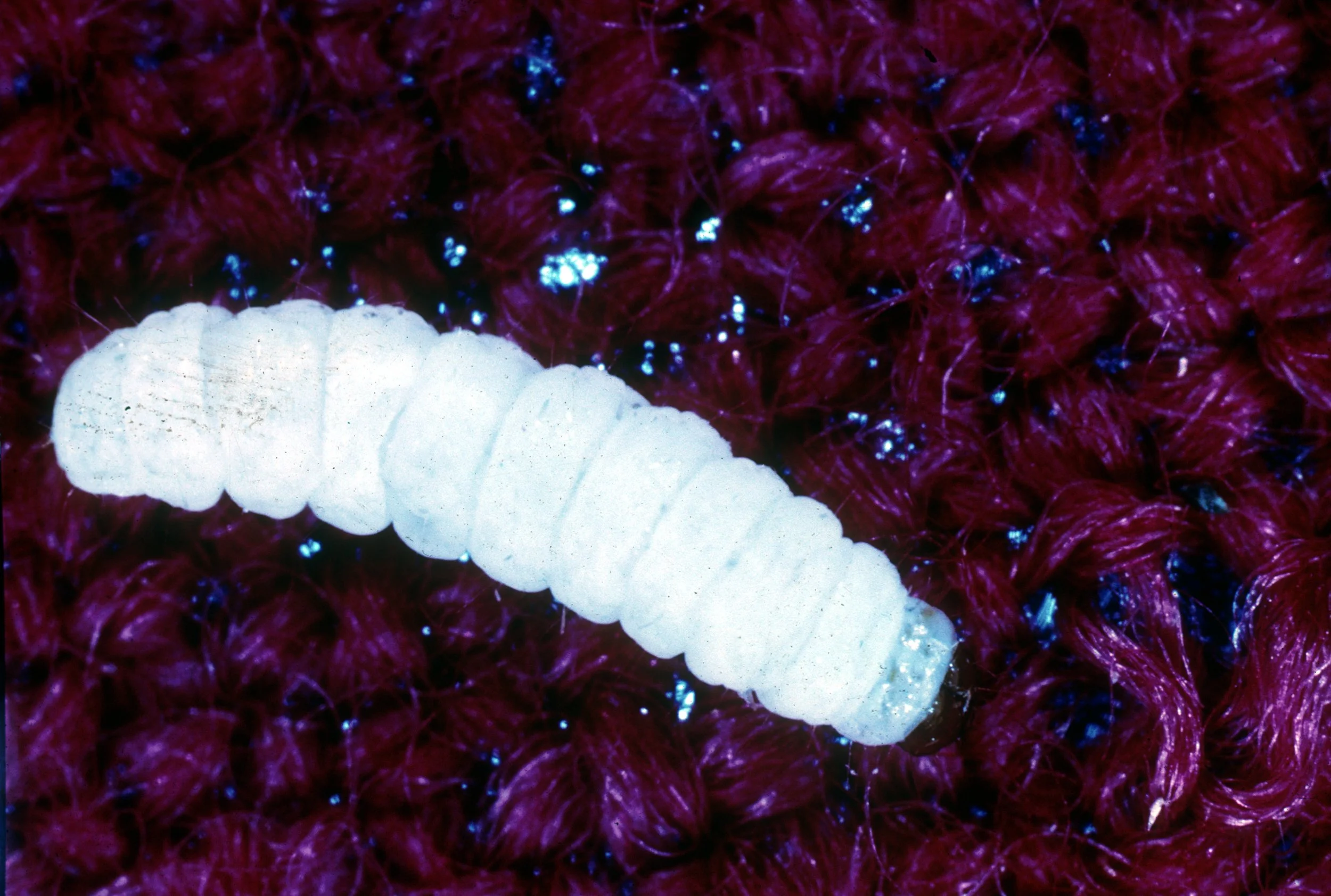Prevent Moths This Summer with Lavender
It’s well known that lavender has been used for generations to ward off moths from attacking our clothes, yarn, and other textiles. But is there any truth to this, or is it an old wives tale? What is it about those little purple blossoms that make moths fly away screaming?
Moths are often unappreciated, especially next to their much flashier cousins, the butterflies. They are equally effective pollinators, and their cute, fuzzy antenae give them an aesthetic charm all their own. I love seeing them out in the wild, but I hate seeing them in my house. With so much yarn and spinning wool, not to mention all the clothes necessary to keep a family of 4 from public indecency charges, moths in the house can spell disaster.
What exactly do clothes moths do to textiles?
Despite what happens in my favourite Silly Symphonies cartoon, the damage is done not by the adult moths, but by their larvae. As soon as a larva hatches from the egg, it begins looking for a source of protein. Unfortunately, since Mommy Moth laid her eggs with this in mind, that source of protein could be your favourite knit sweater or wool suit jacket. The larva eats its fill to have enough energy to pupate and turn into a moth. Once you see a clothes moth flying around your bedroom, it’s already too late.
Prevention is your first weapon in the fight against these hungry little squiggles. Make sure a thorough clean out of your closets and drawers is part of your spring cleaning regimen; moths like environments that are dark and undisturbed, so regularly lighting and disturbing your clothes storage will make those spaces less hospitable for them. Store clean winter clothes in an airtight bin or high quality garment bag and keep them in a different part of your house from the current season’s clothes. Placing a barrier of a cotton sheet or pillowcase between wool and silk clothes and the lid of their storage bin will discourage protein-consuming bugs like moths from having to work their way past a wall of cellulose (cotton).
How does lavender affect moths
Lavender can be an excellent preventative measure for the clothes that are currently in rotation. Lavender contains camphor, cineol, and camphene, all of which moths hate. It won’t exterminate larvae that are already making a meal of your handknit socks, but when Mommy Moth is looking for a good place to lay her eggs, she’s going to avoid places that smell like lavender (rosemary and cedar also work). Lavender essential oil has been shown to be lethal in direct application to larvae, so it makes sense that the smell would warn off any moths looking to make your drawers into their nursery.
Once you’ve made sure your clothes are safe from any existing infestation, lavender is an effective way to maintain a moth-free space. The smell moths hate is a smell humans tend to love; it leaves our clothes smelling fresh and has a relaxing affect on our minds (I know I’m more relaxed when I’m not worried that my sweaters are a a moth buffet). Lavender oil can stain clothes, so keeping the dried flowers in a bag or sachet that you can throw in a drawer or keep dangling from a hanger is an excellent way to use them.
A biscornu lavender sachet woven on a pin loom.
Lavender sachets are readily available to buy, but if you’re a DIYer like me, you’ll want to make your own. Check out my course here to learn how to make 2 different styles of lavender sachets using a 4” pin loom. A pin loom is a perfect introduction to weaving. It’s easy to learn and quick to make, so you can churn out as many of these as you want; they make great gifts!



